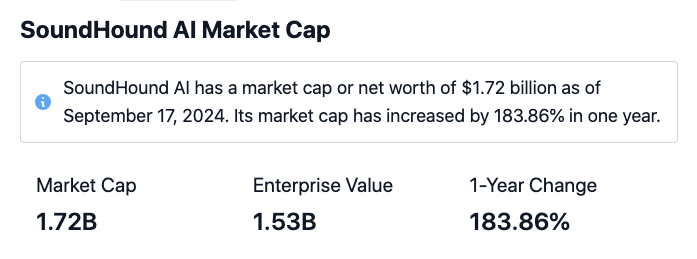20 Handy Reasons For Choosing AI Stock Predicting Websites
20 Handy Reasons For Choosing AI Stock Predicting Websites
Blog Article
Top 10 Tips For Evaluating The Security And Privacy In Ai Stock Predicting/Analysing Trading Platforms
Security and privacy are essential when using AI platform for stock prediction and analysis since they are often handling sensitive financial and personal information. Any breach or mishandling of data can lead to significant financial losses and reputational damage. Here are the top 10 suggestions for assessing the security and privacy of these platforms:
1. Think about Data Encryption
Encryption in transit: Ensure the platform uses encryption protocols that are secure (e.g. TLS/SSL) to protect data that is transmitted between your device and the servers.
Verify encryption while at rest. Check to see if sensitive information is encrypted on the server of the platform using high standards of encryption (e.g. AES-128).
Make sure you have security from end to end This is an absolute must for anyone who wants to safeguard sensitive communications or data.
2. Test Authentication Measures
Two-factor authentication (also known as copyright) is an excellent way to increase security.
Verify biometric authentication.
Password policies: Verify that the platform is able to enforce strong password guidelines (e.g., minimum length or complexity requirements).
3. Check for regulatory compliance
Financial regulations: Ensure that your platform complies all applicable financial laws (e.g. SEC FINRA MiFID II).
Laws on data protection. Check compliance with privacy laws for your area (e.g. CCPA, GDPR) If applicable.
Audit certifications: Find out whether the platform has been subject to third-party security audits or holds certifications (e.g., SOC 2, ISO 27001).
Review Controls for Access to Data
Role Based Access: Verify that the platform utilizes role-based-access controls (RBAC) that limit access to information to only authorized users.
Permission levels: Check if you can set granular permissions for different users or team members.
Activity monitoring: Check if the platform logs and monitors user activity for suspicious behavior.
5. Examine Vulnerability and Management
Regular updates: Update the software regularly to ensure it's always up-to-date.
Penetration Testing: Verify whether the platform is regularly tested for penetration, which identifies and fixes security weaknesses.
Programs for bug bounty: Check whether the platform has a bug bounty program to encourage security researchers from outside to disclose weaknesses.
6. Evaluate Data Privacy Policies
Transparency: Read the privacy guidelines on the website to find out the ways in which your information will be used, collected and shared.
Data minimization: Make sure that the platform only collects the information necessary for its function.
Third-party sharing: Check if the platform is sharing its data with third parties and, if yes in what manner.
7. Secure API usage can be identified
API security: Make sure that the platform's API has secure authentication methods (e.g., OAuth, API keys) and encrypts data exchanges.
Rate-limiting: Verify whether the API has a rate limit to avoid abuse and brute-force attacks.
Check access logs. Check that the platform tracks API usage, and logs it to monitor.
8. Evaluate the response to an incident and recover
Incident response plan: Make sure your platform is equipped with an incident response plan for handling data breaches or security incidents.
Review the platform's notification policy. Does it notify users immediately in the event of an incident?
Backups of data: Determine if the platform regularly backs up data and has a disaster recovery plan in place.
9. Examine Physical Security Measures
Data center security - Ensure that the server for the platform is located in a secure data center with physical security (e.g. surveillance, access control).
Redundancy: Ensure that your platform is outfitted with redundant systems in order to ensure that data is available when hardware fails.
Check the geographic distribution of the data to ensure that it is resilient.
10. Test User Privacy Controls
Data deletion: Ensure that the platform permits you to erase your personal information permanently when you cease using the service.
Privacy settings: Check if your platform offers privacy settings that control what data can be disclosed or made public.
Make sure that you know if the process of anonymization is being performed on the data used for machine learning or analytics.
Bonus Tips
User reviews and reputation Read reviews and feedback from customers to assess the platform's performance in privacy and security.
Trial period: Try out the privacy and security tools of the platform using a a free demo.
Customer support: Make sure that the platform provides a solid support for security-related issues or concerns.
These suggestions will assist you to assess the privacy and security of AI trading platforms which predict or analyze the prices of stocks. Your data and financial information will be safe. A safe platform not only safeguards assets, it also builds trust in their service. See the top rated https://www.inciteai.com/ for blog examples including ai investing, ai bot for copyright trading, trader ai intal, chart ai for trading, best copyright prediction site, best ai copyright, incite ai, ai stock picker, ai bots for trading, best stock analysis app and more.
Top 10 Tips For Risk Management Of Ai Trading Platforms That Predict/Analyze Stock Prices
Risk management is a crucial component of any AI trading platform for predicting or analyzing stocks that helps safeguard your capital and minimize potential losses. A platform that is equipped with powerful tools for managing risk can assist you in navigating unstable markets and help you to make informed decisions. Here are 10 top tips to help you assess the risk management capabilities of these platforms.
1. Review Stop-Loss Features and Take-Profit Features
Level that you can customize: You should be able to modify the levels of take-profit and stop-loss for the individual strategies and trades.
Make sure the platform is able to allow for trails stops. They will automatically adjust themselves as the market moves in your favor.
Guaranteed stop orders: Find out if the platform offers guaranteed stop-loss orders, which assure that your trade is completed at the price you specified regardless of market volatility.
2. Assessment Position Sizing Tools
Fixed amount: Ensure the platform permits you to define position sizes based on an amount that is fixed in monetary terms.
Percentage of portfolio: Determine if you can set the size of your positions in percentages of your total portfolio to manage risk proportionally.
Risk-reward rate: Check whether you are able to define the risk-reward percentages for specific strategies or trades.
3. Check for Diversification Aid
Multi-asset Trading: To diversify your portfolio of investments, be sure that the platform you choose can handle trading in a variety of asset classes.
Sector allocation Check to see what tools are that allow for monitoring and managing sector exposure.
Geographic diversification: Verify if the platform permits trading on international markets to spread geographic risk.
4. Review margin and leverage controls
Margin requirement: Verify that the platform clearly discloses any margin requirements applicable to leveraged trades.
Check if your platform allows you to set limits on leverage in order to limit risk exposure.
Margin Calls: Verify that the platform sends out timely notifications of margin calls to stop account liquidation.
5. Assessment and Reporting of Risk
Risk metrics: Ensure that the platform provides key risk metrics (e.g., Value at Risk (VaR) Sharpe ratio drawdown) for your portfolio.
Scenario analysis: Check whether the platform permits you to model different scenarios of market to determine potential risks.
Performance reports: Check if you can get detailed performance reports from the platform. These reports include risk-adjusted results.
6. Check for Real-Time Risk Monitoring
Monitoring of your portfolio: Make sure your platform permits you to track your portfolio in real-time.
Alerts and notifications: Check the system's capability to provide real-time alerts for situations that could be risky (e.g. breaches of margins or Stop loss triggers).
Check for customizable dashboards that will give you a snapshot of your risk profile.
7. Evaluation of Stress Testing and Backtesting
Stress testing - Ensure that your platform allows you to stress test portfolios and strategies under extreme market situations.
Backtesting. Find out if the platform supports backtesting, which involves the use of data from the past to evaluate the risk and the performance.
Monte Carlo: Verify the platform's use of Monte-Carlo-based simulations to assess risk and modeling a range of possible outcomes.
8. Risk Management Regulations: Assess the compliance
Check for regulatory compliance: Make sure that the platform is compliant with the relevant regulations for risk management (e.g. MiFID II, Reg T, in the U.S.).
Best execution : Check to determine if your platform is following the best execution practices. This will ensure that trades are executed at the highest possible price, minimizing the chance of the chance of slippage.
Transparency: Verify that the platform has clear and transparent disclosures about the risks.
9. Examine for Risk Parameters that are user-controlled
Custom risk rules: Ensure that the platform lets you create custom risk management guidelines (e.g. maximum daily loss, maximum position size).
Automated Risk Controls Find out whether the system is able to automatically enforce risk management policies in accordance with predetermined parameters.
Manual overrides - Examine to see if your platform allows you to manually override automated risk controls.
Review user feedback and case studies
User feedback: Review the opinions of users to determine the platform's capacity to manage the risk.
Case studies: Search for testimonials or case studies that showcase the platform's strengths in risk management.
Community forums: See if a platform has an active community of users who are willing to share strategies and tips to manage risk.
Bonus Tips
Trial period: You can make use of a demo or a no-cost trial to test out the risk management features on the platform.
Customer support: Make sure your platform has a robust support to any questions or issues that are related to the management of risk.
Educational resources - See whether the platform provides educational resources and tutorials on risk management best practice.
These suggestions will assist you to determine the risk management capabilities of AI stock-predicting/analyzing trading platforms. In this way you can pick a platform that safeguards your investment and reduces the risk of losses. To navigate turbulent markets and attain long-term gains in trading it is essential to use a robust software for managing risk. Have a look at the best your input here about chart ai trading for more advice including ai stock picker, trade ai, ai stocks, chart analysis ai, ai investing, incite ai, ai trading app, ai stocks, trader ai intal, ai copyright trading bot and more.